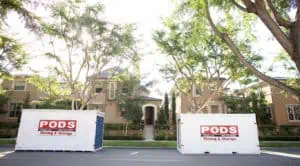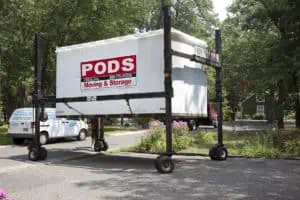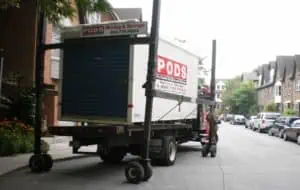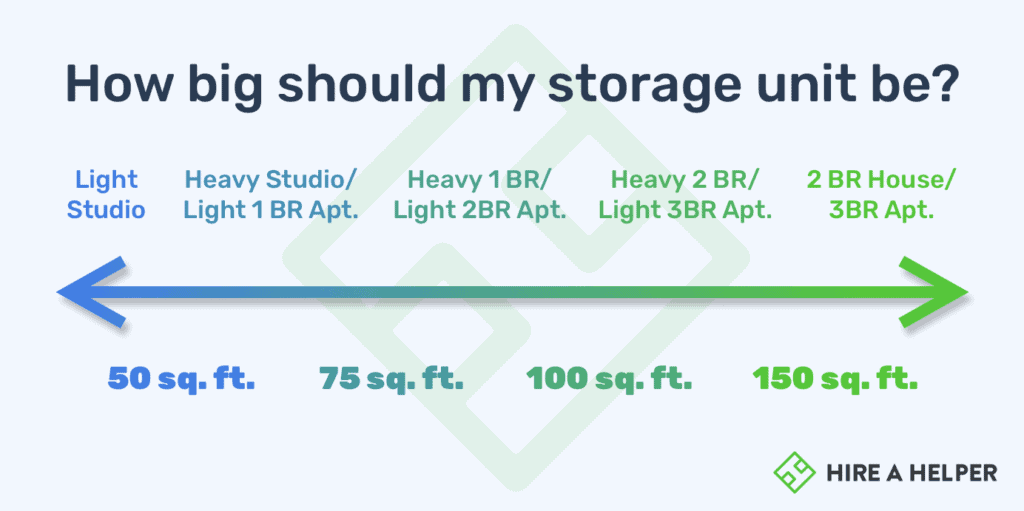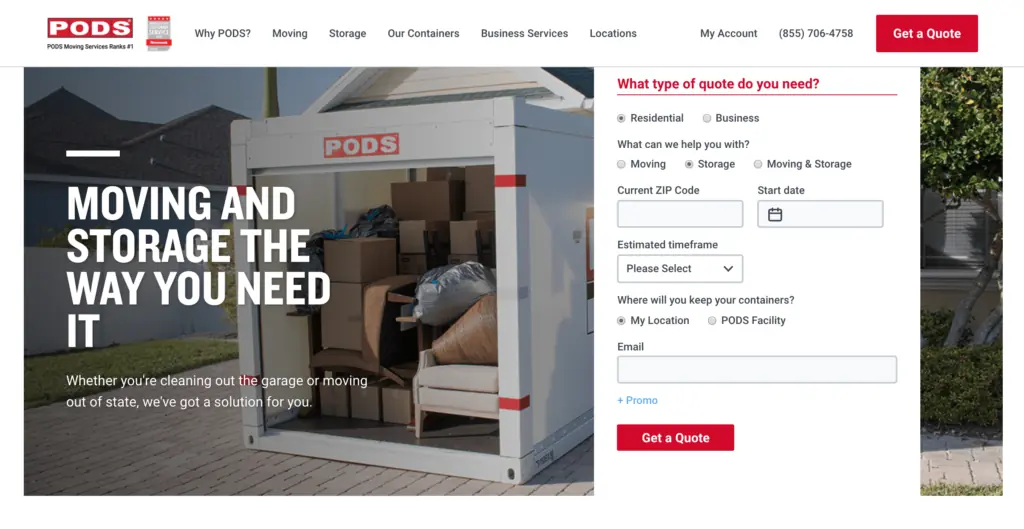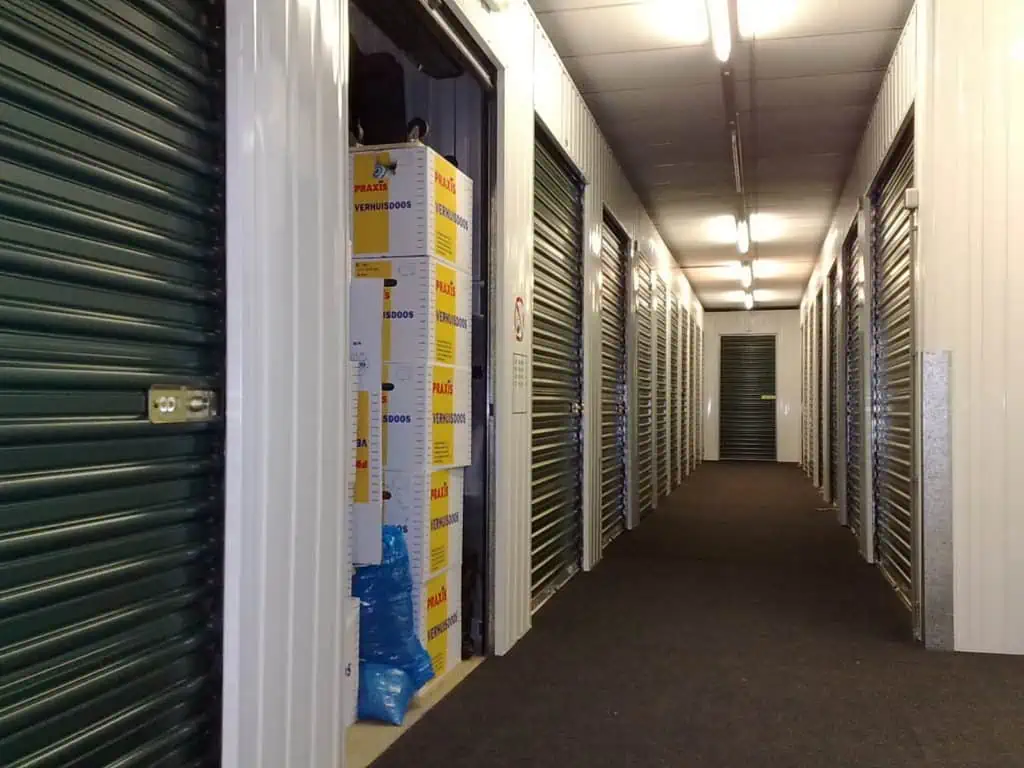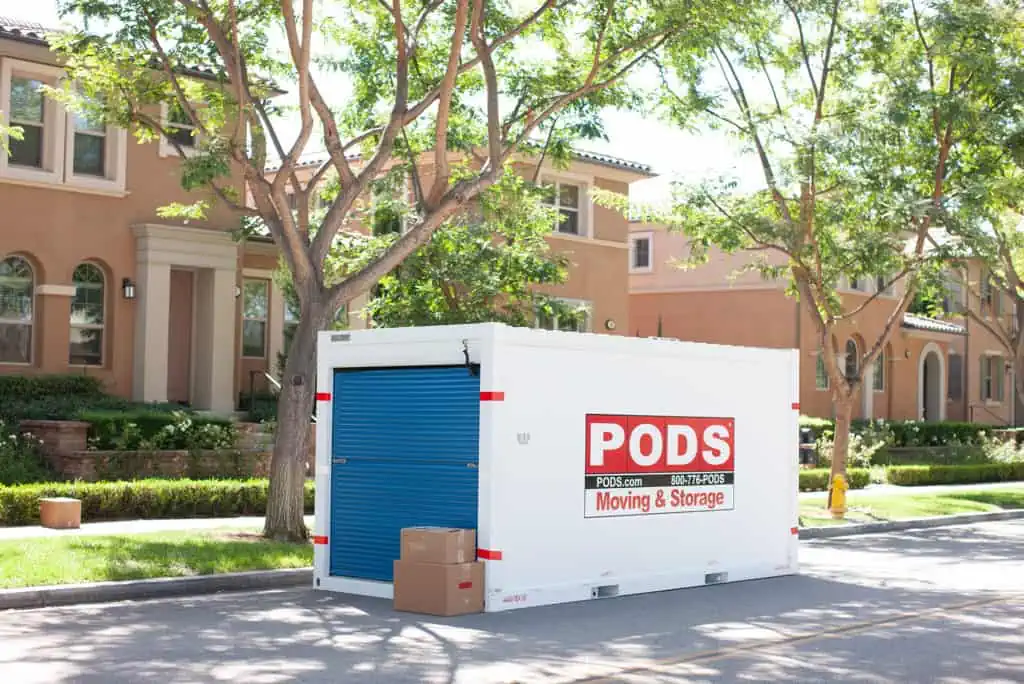We all prioritize different things when it comes to planning a move. While some might prefer to take it easy by packing and loading at their own pace, others may prefer things go as swiftly as possible and settle quickly in their new home. In any case, moving containers like PODS offer many possibilities for organizing the move you need.
In this blog post, we will cover the basics of moving with PODS: What are they, how do they work, and how much can they fit inside. Let’s dive in!
PODS Company Overview
PODS (Portable on-demand Storage) was the first company to make all those portable storage units you see on the road, in people’s driveways, or sitting in one of their 230 storage centers across the country.
With over 4 million deliveries and more than 900,000 long-distance moves under their belt, it’s safe to say they are the leading “you-pack it, they-move it” moving container companies.
What are PODS?
PODS are portable steel and aluminum storage containers that are delivered straight to your home, office, or wherever you designate as a delivery address. Once it’s in your location, you can keep it as long as you need and get billed monthly. Some of their most popular features include:
- You get to schedule your delivery and pick-up dates
- Available storage facilities for as long as you need
- Translucent container roof which allows sunlight to come in
- Security locks (just make sure to ask for them in advance)
- Free insurance, covering up to $10,000
- 4.48/5 avg. customer reviews
How big are PODS?
There are three container sizes to choose from 7′, 12′, and 16′. However, they all have the same steel skeleton with aluminum skin and steel roll-up door.
The size you will need depends on how big your house is or how many rooms you plan to fit in it. We put together a small chart to help you figure out what size is best for you, considering your house’s dimensions and average room furnishing.
| Length | Width | Height | Dimensions | Capacity |
| 16’ | 8’ | 8’ | 1,200 sq. ft. or smaller | 3 to 4 rooms |
| 12’ | 8’ | 8’ | 500 – 1,00 sq. ft. | 2 to 3 rooms |
| 7’ | 7’ | 8’ | 500 sq. ft. or smaller | Dorm or small apartment |
How much do moving PODS cost?
PODS can accommodate a wide range of moves: from local to long-distance, studio apartments to large houses. Naturally, prices can go up depending on how many PODS you will need and for how long. Remember, PODS bills monthly.
We analyzed actual HireAHelper data from thousands of people who have used PODS to move and broke down the average costs and reviews by distance; take a look below at how much moving PODS cost:
| Distance | Average Cost | Average Review |
| Local Move (under 50 mi) | $664 | 4.51/5 |
| Medium distance (50- 250 miles) | $1,503 | 4.59/5 |
| Long distance (250+ miles) | $3,364 | 4.49/5 |
As you can see, planning a large, long-distance move with PODS might be on the pricier side compared with other moving container companies. But some of their different features can make the price worth it, such as:
- The convenience of keeping the container as long as you need
- They have one of the largest storage facilities networks in the Country
- Avoid driving a trailer across states with tons of your furniture in it
- Seamless operations and logistics, according to their customer reviews
How exactly does PODS work?
Let’s talk about how you can plan your move if you decided to go with PODS.
Use their online estimator, or call them
There are a couple of ways you can book your PODS. You can build your itinerary on their site, according to how much stuff you have and your needs. Make sure you have an accurate estimate on the things you’ll be moving; there’s nothing worse than ending up spending too much by adding more containers than necessary or running out of space too soon (yikes!). If you’re planning a long-distance move, you’ll need to call the PODS line for a customized moving quote: 888-371-9441.
Reserve your date
Once you settle the details, your container will be delivered to your location. You can keep the containers on your property as long as your need, but remember that they bill monthly, so if you go one minute over the month, you get charged for another.
Keep in mind that you will need the space in your driveway or the street for the container. You don’t want to be that neighbor. You may need a special permit for your container if you plan to keep it in the street, so make sure to sort those details out before the delivery day, or you could get fined.
Wait for delivery
One interesting thing is that you don’t necessarily need to be present for your PODS delivery, as long as you leave detailed delivery instructions for the driver to place your container. Nevertheless, some users might recommend it’s better if you’re present if any issues need to be solved at the moment.
If having a big metal container in your front yard isn’t your thing, just ask PODS to pick it up once it’s loaded. They can keep it safe in one of their 230 storage centers across the country until you are ready to have it delivered to your destination.
The Bottom Line About Moving with PODS
PODS is convenient because they take care of all the transportation logistics while giving you enough time and space to plan your ideal move. However, prices may seem a little steep compared to the competition, especially for long distances and if you need more than one PODS container to fit in your stuff.
Also, keep in mind that PODS are available on a first-come, first-served basis, so depending on their availability, you can secure a container on the dates you need if you plan early. Generally speaking, summer tends to be the peak season for moving, so if you plan to move during these months, remember to book your PODS with plenty of time in advance to secure your container.
It doesn’t hurt to shop around and get more quotes, but always keep in mind that time is your best friend for booking a move. Usually, planning months ahead gets you a better deal, depending on the size of your move and the distance you have to go.
You can start planning by taking a look at our Moving101 page about moving containers, we have a myriad of information on the most popular moving container companies, their pros, cons and reviews.

